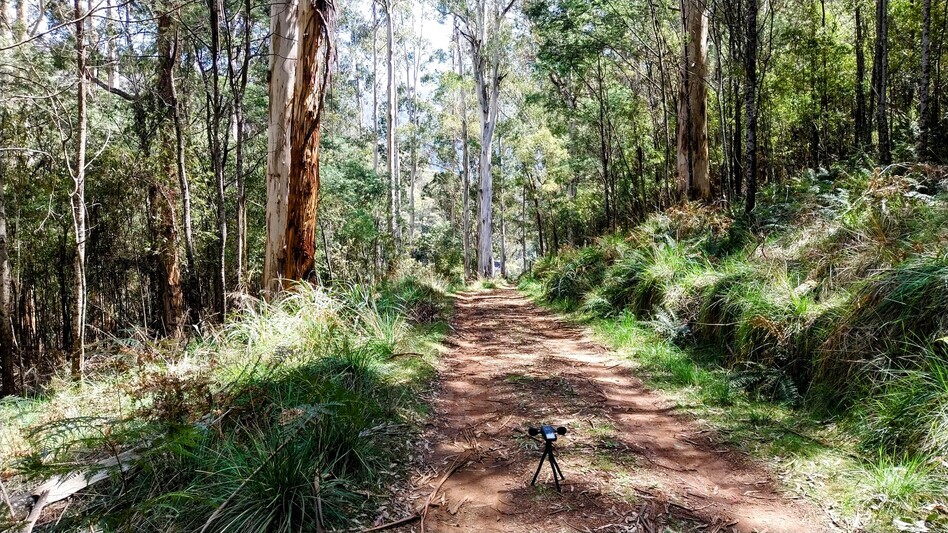(13.10.2024)
Madelynne Cornish, the operations director of the Bogong Centre for Sound Culture, had informed me last month about the writer’s festival happening in Mount Beauty on the 12th of October 2024. Yesterday, I had the privilege of attending the festival along with Madelynne. Needless to say, the whole day was filled with intellectually stimulating discussions by an esteemed panel of authors. The author I was most fascinated to listen to was Satyajit Das, an internationally renowned financial thinker and wildlife writer. I bought his book Wild Quests and started reading it as soon as I got back to Bogong.
Over the last few days, I’ve been thinking about ideas around habitat, intrusion, and co-existence. As a human race, we have failed and destroyed our planet’s biodiversity and the multi-species habitat spaces. We have a process of thinking that is binary; we always base our ideas in opposition to something else, or in contrast, rarely in relation to. If we consider a bird, it flies. It traverses long distances during its lifetime. But where is its home? How do we define; "destination"; in that context? How do we differentiate origin from destination? In his book, Das brings a brilliant critique of eco-tourism and explores the exuberance of experiencing a species in the wild, as it is. I relate to that exuberance completely, as I remember the moment when Madelynne showed me a beautiful Kookaburra bird sitting on one of the fences as we drove to the festival. On the first day of the residency, I had the good fortune of hearing the calls of the Laughing Kookaburra, and I was thrilled to bits, as I had never heard anything like it before.
As I write this journal, I listen to the calls of the Yellow-faced Honeyeater in front of my room. It has a beautiful song that varies with the time of day and the changing weather patterns. Listening to this is a delightful experience for me. Why would I want something more from it? If I think of wanting something more, I will cross a boundary—from experience into extraction. Das writes wonderfully about nature documentaries, stating: “Documentaries, definitionally, speak to verisimilitude. Wildlife filmmakers originally sought to accurately portray the natural world. But technical considerations, audience demands and business necessities forced them to balance fact with entertainment. As a result, what the audience sees is, to a greater or lesser degree, contrived.”
Today I was walking around Lake Guy, and at one point, I switched on my recorder. In the context of what I was trying to articulate earlier, what does it mean for me to press "record" inside a wilderness area? As a researcher and sound artist working on ecological issues, it is imperative for me to go out into the wild and record sounds. But while the Kiewa West Power Station has a big signboard saying, "Only authorised personnel allowed" there is no signboard from the birds, insects, and trees. So, who authorizes me to press the record button in the habitat of birds, insects, and a whole lot of other wildlife? As sound researcher and theorist Mark Peter Wright investigates in his work Listening After Nature, the concepts of absence and presence become quite blurry while considering the context and positionality of the recordist. The enquiries around permission and agency are critical to his work. He beautifully says, “The history of field recording is very much linked to the fragmentation of land and colonies.”
As I listen and record in Bogong Village, I cannot ignore or push into oblivion the history of the original custodians of this land. As Mark aptly writes, "the field is a fractal version of itself". This resonates with me even when I record 100 kilometres away from my home in the Sundarbans. I am a foreigner to that land and culture, though there are many similarities. Here, I agree with Das’s point that we are part of the problem—we embody multiplicities of contradiction. How do we decipher the boundary between non-invasive presence and disruption to a habitat? As I listen to the beautiful rhythms in the calls of the Pied Currawong, I question my own methods of listening and recording in the field. On a bright sunny evening in Bogong, I find myself both embracing the environment around me and questioning the relational dynamics that have damaged and destroyed natural habitats across the globe.
